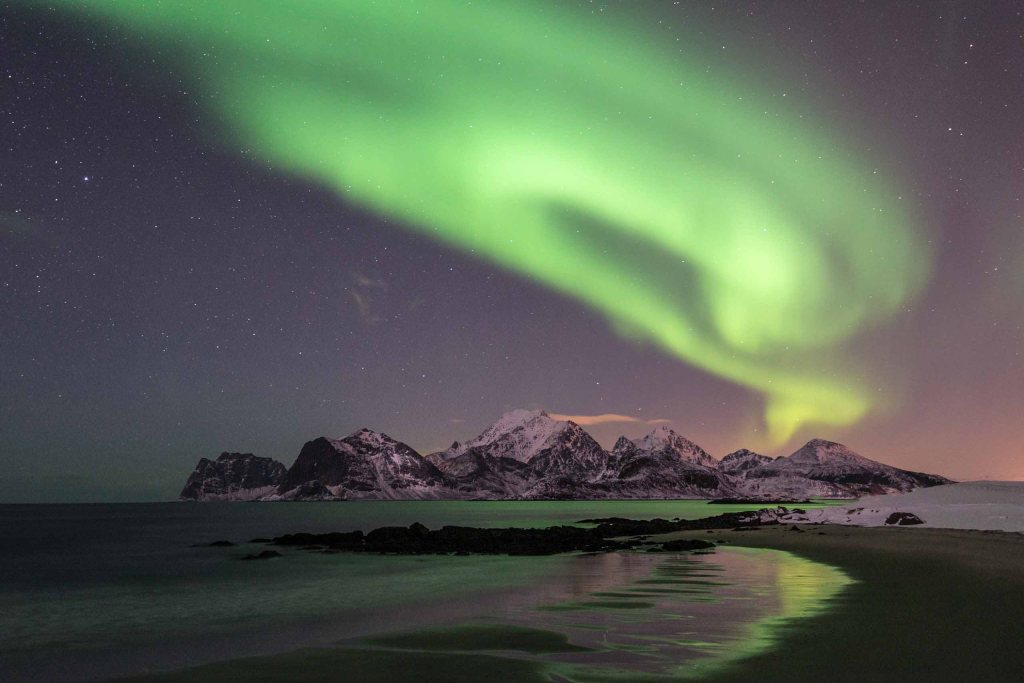International collaboration for space weather experts
31 Oct 2022 11:39 AM
As the UK weather continues its shift to a more autumnal feeling, weather of a whole different kind has been under the microscope in Croatia this week, and it takes place beyond earth’s atmosphere, space weather.
Leading scientists from across the world gathered as part of European Space Weather Week in Zagreb to discuss the latest developments in space weather.
Scientists, researchers, forecasters and users of space weather forecasts were in attendance, collaborating on learnings and developing links for future projects. Over 300 people were in attendance, with others joining talks online from around the world.
The Met Office Space Weather Operations Centre (MOSWOC), as one of a handful of 24/7 space weather forecasting centres in the world, was in attendance and even did a live space weather forecast while at the event.

Northern Lights. Picture from Richard Ellis, Royal Photographic Society.
Met Office Space Weather Senior Account Manager Krista Hammond said:
“It has been a really interesting week. There has been a whole range of activities and sessions. There were some science-based sessions where scientists were sharing their latest research, as well as some end-user focused discussions.
“As leaders in space weather science we’re also sharing our experience. I’ve been talking about our work with the aviation industry and sharing how we operate as a 24/7 space weather forecasting centre.”
With discussion points for scientists focusing on the technicalities of space weather forecasting and potential impacts, it’s easy to forget one of the most obvious ways people can see space weather in action, the Northern Lights.
Krista said:
“The Northern lights, which is that beautiful display of light that we see across high latitudes, is the main way people are indirectly aware of space weather. That light is indicating there’s a stormy solar environment, and that’s the most obvious visual representation of space weather.”
Solar flares, solar radiation storms and coronal mass ejections are the principal interest for space weather forecasters. While space weather is responsible for the spectacle of the Northern lights, it also has the potential to impact across international borders, which is why it’s so important that researchers collaborate and share learnings.
Krista continued:
“Space weather can cause disturbances in near-Earth space and our upper atmosphere, and those disturbances can cause impacts on our technology and infrastructure here on earth. By that I mean things like our communications systems or satellite systems and some of our ground-based infrastructure.”
Looking ahead
The theme for this year’s European Space Weather Week was ‘The importance of comprehensive space-weather monitoring’; something that isn’t lost on the Met Office, as they continue to develop their space weather forecasting capability.
The MOSWOC is currently part-way through contributing to a four-year programme that will improve the UK’s capabilities for space weather monitoring and prediction, known colloquially as SWIMMR (Space Weather Instrumentation, Measurement, Modelling and Risk). Led by the Science and Technology Facilities Council with the Natural Environment Research Council, the aim is to improve the UK’s ability to predict space weather, with five projects running as part of SWIMMR.